Although this may be a basic question but I'm still struggling with it. In this schematic, two zener diodes D1 and D2 are connected back-to back across relay coil L1. The BVds = -30V for Q1. Can I use 15V(Vz = 15V) zeners for D1 and D2 instead of 5.1 V zeners? Will the relay coil or contacts can get damaged during turn-off of relay? If required, I'm using this relay (5V DC Standard Coil).

Also, to reduce steady state current consumption of relay coil, I wanna use the RC ckt shown aside in schematic. As soon as Q1 turns-on, uncharged capacitor temporarily appears as a dead short, causing maximum current to flow through the relay coil and closing the relay contacts without chatter. As the capacitor charges, however, both the voltage across and the current through the relay coil decline. The circuit reaches steady state when the capacitor has charged to the point that all the current through the relay coil is moving through R1. The contacts will still remain closed until the drive voltage is removed.
Which is the best place to put this RC ckt - section marked 'A' or 'B' in schematic. Will it make any difference? Section-B seems to me the best choice, as when Q1 turns-off, capacitor C1 can discharge via R1 through ground. How will C1 discharge when instead I place RC ckt at section-A? Am I missing something here? Does putting this RC ckt has any side-effects? Any better solution?
Please correct me if I'm wrong or missing something?
UPDATE1 on 2012-07-09 :
Say in above schematic I have 6V DC Standard coil(see datasheet above), 48.5 ohm relay. And take C1 = 10uF say. Assume that R1C1 ckt is placed at section-A in schematic above. The power supply is at +5V.
For a Drop of 3V(Hold-on voltage) across relay coil, the current must be 62mA approx. through coil. So drop across R1 at steady state is 2V. For a current of 62mA through relay coil at steady state, R1 must be 32.33 ohm.
And charge on C1 is 2V x 10uF = 20uC, at steady state.
Now in this data sheet, the operate time is given to be 15ms worst case. From above data we have RC = 48.5ohm x 10uF = 0.485 ms. So, as soon as Q1 is turned on, the C1 will be almost fully charged in 2.425 ms.
Now how do I know that this duration of 2.425 ms is sufficient for relay to make its contacts close?
Similarly, as soon as Q1 is turned-off, due to back emf generated and clamped to 3.3V by zener D2(Vz = 3.3V) plus diode D1 drop of 0.7V, the voltage across C1 will be -2V + (-3.3V - 0.7V) = -2V. But charge on C1 is still 20uC. Since capacitance is constant, so charge must decrease as voltage across C1 decreased from +2V to -2V instantly after turning off Q1.
Isn't it violation of Q = CV?
At this point, the current that is flowing through relay coil due to back emf will be 62mA in same direction as was before turning-off Q1.
Will this 62mA current will charge or discharge the C1? The voltage across C1 is 6V as soon as Q1 is turned off right? I didn't get how currents will flow b/w R1, C1, D1, D2 and relay coil as soon as Q1 is turned-off.
Can someone throw light on these issues?
UPDATE2 on 2012-07-14 :
"Current in an inductor will not change instantaneously" - While there is a flyback diode D1(Say, D1 is not zener but a small-signal or a schottky diode, and zener D2 is removed in the schematic above), as soon as Q1 is turned-off, will there not even be a current spike(not even for few usecs)?
I'm asking this becoz, if there is a current spike then the amount of current that will flow during this spike(say > 500mA in this case) might damage the flyback diode if I had selected a diode with max peak forward current rating of around 200mA or so only.
62mA is the amount of current that is flowing through the relay coil when Q1 is on. So, will the current through relay coil never exceed 62mA - not even for a moment(say for some usecs) after Q1 is turned off?

